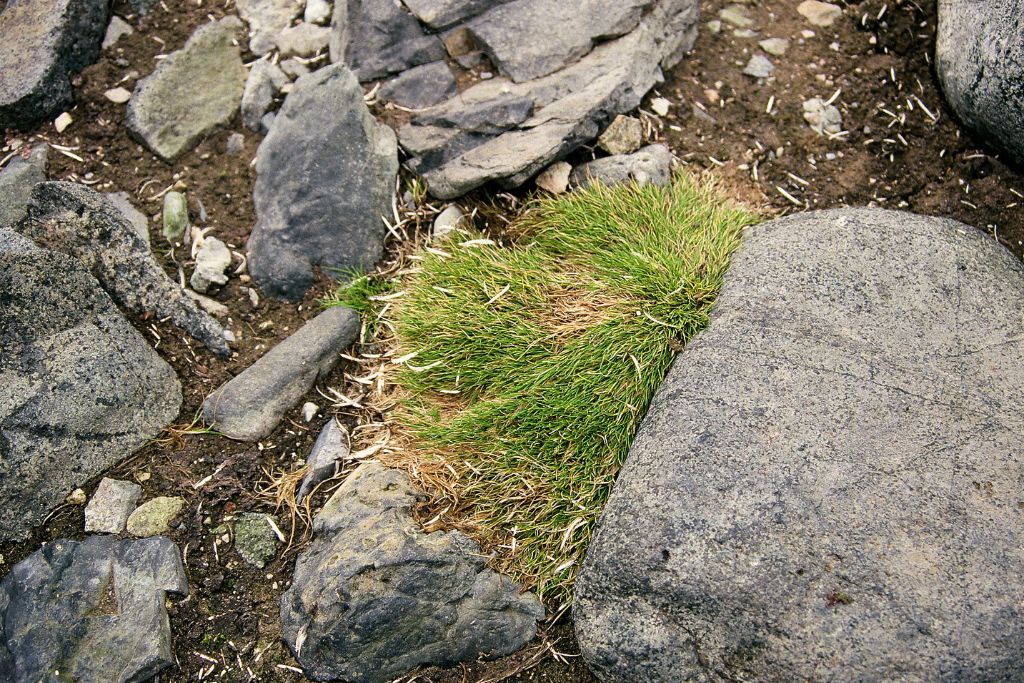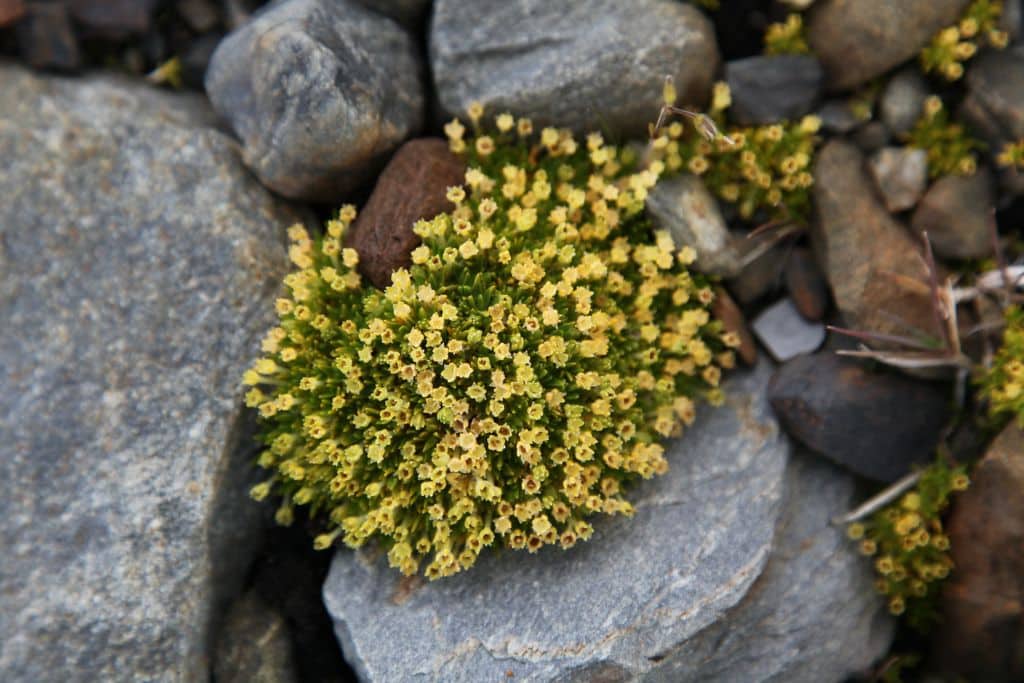This article delves into the changing climatic conditions in Antarctica that have given rise to these blooming flowers. It explores the scientific research conducted on Signy Island, one of Antarctica’s subantarctic islands, and the implications of rapid plant growth in this remote region. It also discuss the potential risks posed by non-native plant species colonising Antarctica and the destabilisation of the fragile Antarctic ecosystem. This extraordinary transformation serves as a stark warning sign of the far-reaching impacts of the climate crisis and the urgent need for global environmental stewardship.
—
Antarctica, the Earth’s coldest and most inhospitable continent, has long been considered one of the last pristine wildernesses on our planet. A land of ice and snow, where temperatures can plummet to bone-chilling extremes, it has been considered an unlikely candidate for hosting life, let alone lush vegetation. However, recent scientific research has unveiled a surprising and concerning transformation in this remote corner of the world. Flowers are blooming in Antarctica, a phenomenon that has garnered attention not only for its intrinsic beauty but also for the profound implications it holds for the global climate crisis.
The two flowering plants in question, the Antarctic Pearlwort (Colobanthus quitensis) and the Antarctic Hair Grass (Deschampsia antarctica), native to Antarctica, are thriving like never before. Their growth rates have skyrocketed in recent years, and the primary driver behind this botanical revolution is climate change. Rising temperatures, attributed largely to human activities, are causing the Antarctic landscape to warm at an unprecedented rate. While this newfound botanical abundance may appear to be a welcome sign of life in a harsh environment, it carries with it ecological consequences that demand our immediate attention and action.
You might also like: Antarctic Sea Ice Sets Record Low Maximum Extent By ‘Wide Margin’, New Analysis Shows
1. The Antarctic Hair Grass and Antarctic Pearlwort
Before delving into the remarkable changes occurring in Antarctica, it’s crucial to understand the two native vascular plants responsible for the newfound floral growth – the Antarctic Hair Grass and the Antarctic Pearlwort.
The Antarctic Hair Grass (Deschampsia antarctica)

The Antarctic Hair Grass, scientifically known as Deschampsia antarctica, is a resilient and hardy plant species endemic to Antarctica. It has adapted over millennia to thrive in the extreme conditions of the continent, such as cold temperatures, strong winds, and limited sunlight. Characterised by its tufted, grass-like appearance, this plant has long been a part of Antarctica’s unique ecosystem.
The Antarctic Pearlwort (Colobanthus quitensis)

The Antarctic Pearlwort, also known as Colobanthus quitensis or the Antarctic Carnation, is another native vascular plant found in Antarctica. Its delicate white and pink flowers have been a rare sight in the barren landscape, making it a remarkable species that has managed to survive in this hostile environment.
2. Signs of Transformation: Rapid Growth in Antarctica
Signy Island, part of the South Orkney Islands in the Southern Ocean, serves as a microcosm for studying climate change’s impact on the Antarctic ecosystem. Scientists have been monitoring plant growth on this island for decades, providing invaluable data on how the continent’s vegetation is responding to shifting climatic conditions.
Accelerated Growth Rates
Between the 1960s and 2009, researchers observed the slow but steady growth of the Antarctic Hair Grass and Antarctic Pearlwort on Signy Island. However, the most significant changes occurred between 2009 and 2019 when the growth rates of these plants accelerated dramatically. The Antarctic Hair Grass exhibited a tenfold increase in growth, while the Antarctic Pearlwort grew five times faster than in the previous decades.
Warming Temperatures as the Primary Driver
While other factors like trampling by fur seals might influence plant growth on the island, the leading cause of this botanical transformation is the warming climate. Antarctica, once characterised by its year-round cold, is experiencing rising temperatures due to human-induced global warming. This shift has allowed these native plants to thrive as they seize the opportunity presented by milder conditions.
3. Implications of Rapid Plant Growth
Competition with Mosses and Lichens
The rapid proliferation of the Antarctic Hair Grass and Antarctic Pearlwort carries significant ecological consequences for Antarctica’s native flora, primarily composed of mosses and lichens. These slow-growing species have evolved to withstand the continent’s harsh environment and play a crucial role in stabilising the ecosystem.
Mosses and Lichens in Antarctica
Mosses and lichens have long been the dominant types of vegetation in Antarctica, forming a fragile but intricately balanced web of life. These plants are well-adapted to survive in the extreme cold and arid conditions of the continent, providing essential habitats and sustenance for various microorganisms and insects.
Threat of Competition
The rapid growth of the Antarctic Hair Grass and Antarctic Pearlwort poses a direct threat to the established mosses and lichens. These native plants could potentially outcompete the slower-growing species for resources, disrupting the delicate equilibrium that has existed for millennia.
Invasion by Non-Native Species
Another alarming consequence of this botanical transformation is the potential for non-native plant species to establish themselves in Antarctica. As the climate warms and conditions become more favourable for plant growth, there is a risk that invasive species could take root in this fragile ecosystem.
Invasive Species Threat
The introduction of non-native plants to Antarctica could have devastating consequences. Invasive species often outcompete native flora and fauna, leading to a loss of biodiversity and disruption of ecosystem services. This could further destabilise an already delicate Antarctic ecosystem.
Global Transport of Non-Native Seeds
Global trade and human activity have increased the likelihood of non-native seeds being transported to Antarctica unintentionally. These seeds could hitch a ride on clothing, equipment, or vehicles used by researchers and tourists visiting the continent, posing a heightened risk of invasive plant species establishing themselves in Antarctica.
You might also like: Invasive Species Cost Global Economy $423bn Each Year, Threaten Ecosystems and Food Security: Report
4. The Climate Crisis and Antarctica
A Red Warning Sign
The blooming of flowers in Antarctica is a powerful symbol of the far-reaching impact of the climate crisis. It serves as a stark reminder that no corner of our planet remains untouched by the consequences of rising global temperatures. While this botanical transformation may seem inconsequential in isolation, it is a red warning sign that demands our attention and immediate action.
The Fragile Antarctic Ecosystem
Antarctica’s unique ecosystem, characterised by its extreme conditions and limited biodiversity, is exquisitely adapted to the continent’s harsh environment. The rapid changes brought about by climate change threaten to destabilise this delicate balance, potentially leading to irreversible ecological damage.
Urgent Need for Conservation
The transformation of Antarctica’s vegetation underscores the urgent need for conservation efforts in this remote region. As the pace of climate change accelerates, it is essential to protect the native flora and fauna of Antarctica, preserving the continent’s biodiversity and ecological integrity.
A Call to Action
The emergence of flowers in Antarctica is a captivating and alarming phenomenon that highlights the profound impact of climate change on our planet’s most remote regions. The rapid growth of the Antarctic Hair Grass and Antarctic Pearlwort serves as a powerful indicator of the warming temperatures in Antarctica and the consequences of this shift for the continent’s unique ecosystem.
As we witness this botanical transformation, it is incumbent upon us to recognize the urgency of addressing the climate crisis. The fate of Antarctica’s fragile ecosystem is intertwined with the fate of our planet, and the choices we make today will determine the legacy we leave for future generations.
In the face of this red warning sign from the icy heart of Antarctica, we must act decisively to mitigate the impacts of climate change, reduce greenhouse gas emissions, and protect our planet’s most vulnerable ecosystems. The flowers of Antarctica serve as a call to action, a reminder that the time for change is now, and the responsibility to safeguard our world rests upon us all.
Featured image: The Antarctica Pearlwort, shot at St. Andrews Bay, South Georgia (2011). Photo: Flickr/Liam Quinn.
You might also like: Over 90% of Emperor Penguins Will Be Quasi-Extinct By 2100 If Current Antarctica Sea Ice Loss Rates Persist: Study
This story is funded by readers like you
Our non-profit newsroom provides climate coverage free of charge and advertising. Your one-off or monthly donations play a crucial role in supporting our operations, expanding our reach, and maintaining our editorial independence.
About EO | Mission Statement | Impact & Reach | Write for us




















